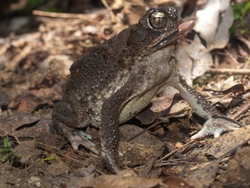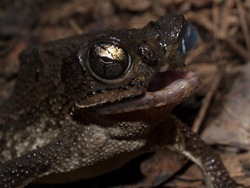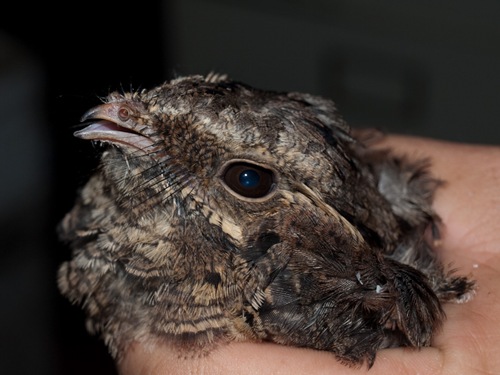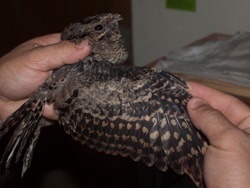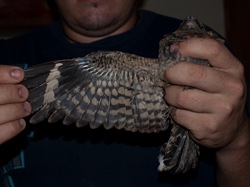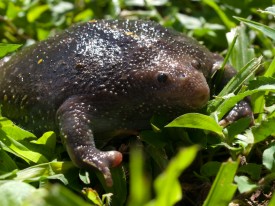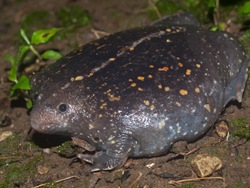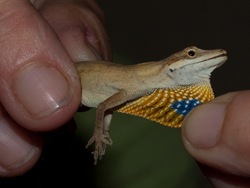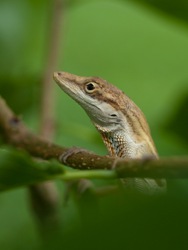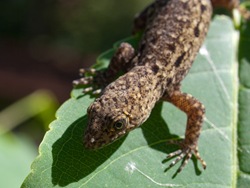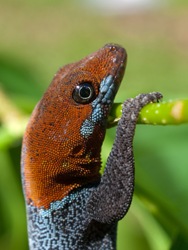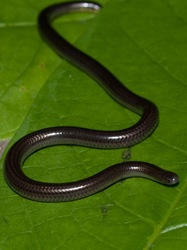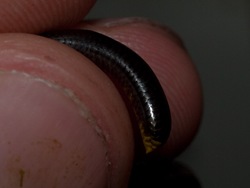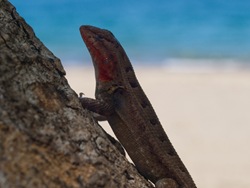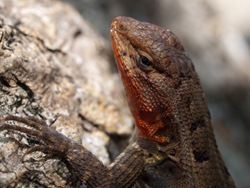There have been two of these toads found so far, both adult females with some kind of deformity on the upper mandible. It appears that both were a result of development, rather than some trauma, because the eye positions are slightly different. It’s interesting that they had lived despite the deformities.
Category Archives: Gallery
Is this a common pauraque?
Sapo Borracho
This post may be in next year’s OTS calendar!
The Mexican Burrowing Toad Rhinophrynus dorsalis is a bizarre, almost jelly-like anuran that specializes on ants and termites. The Spanish common name (Sapo Borracho) is derived from the males’ odd, whiny call used to attract mates soon after the first rains. They are explosive breeders, traveling to water in mass migrations to breed, while spending the majority of the year underground. The pictured individual was captured during an amphibian survey being conducted at the OTS field station at Palo Verde National Park.
On the left, this toad has had it’s toe clipped for the mark-recapture study.
The other anole
The other anole species that we’ve found in Palo Verde is Norops sericeus. It’s much less common than the other anole (Norops cupreus); we’ve only encountered three in my time here. The snot of N. sericeus is extended and more pointed, but it’s dewlap is certainly the easiest way to tell the two species apart.
Moonset
No video, but I did get the sunrise the same morning.
Yellow-headed gecko
Leptotyphlops ater
San Juan del Sur
I’ve returned safely to the Palo Verde field station, although my bowels have not quite returned with me… Anyway, I’ll get back to posting some herp pictures; there are still a lot to catch up on.

